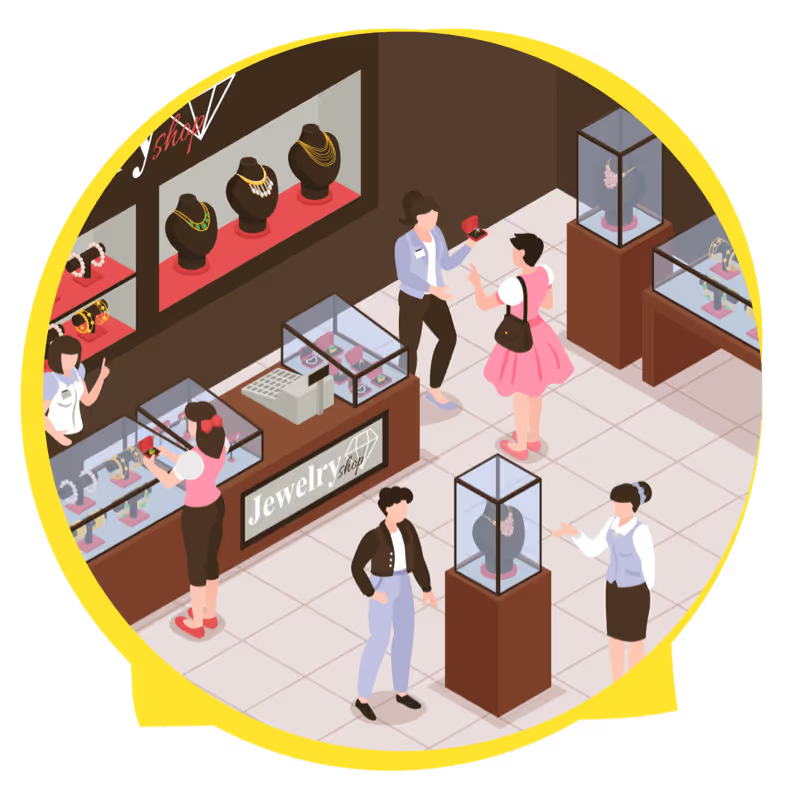As retail technology has evolved, we have found better ways to measure, track and compare operational performance and efficiency. The online sales funnel in particular is well quantified and segmented, from PPC data through to retargeting metrics, website journeys, basket sizes and more.
However, metrics and KPIs relating to the physical store can be more difficult to track and interpret as idiosyncrasies across stores are reflected in the data. As a result, clients often decide to collect and compare metrics on a project basis, rather than to collect and analyse them continuously over time. Whatever the approach, building a quantified, metrics-based view of the business, its component stores and the stages along the sales funnel, can result in dividends.
With that said, we summarise the 6 key in-store metrics – how they’re calculated and what they may indicate. Note that there is often no ‘good’ or ‘bad’ comparator to many of these metrics, and the business strategy will inform where the focus lies. A high-end fashion retailer, for example, will have a completely different set of metrics to a convenience store. Either may implement a strategy to drive higher capture rates and basket sizes, but the metrics they select will be vastly different.
1) Sales per square foot.
Total store sales over period / square foot of retail space
This should exclude revenue related to click-and-collect or internet returns.
This is one metric to represent store size efficiency. It should not be used in isolation – lower than expected sales in a large space could be because of low traffic, high traffic and constrained sales staff for example. But in comparing across multiple outlets, this is a metric that helps plan future growth and rental negotiations with landlords.
2) Sales per employee.
This is calculated as:
Total store sales over period / average number of floor staff
As with most metrics – but particularly this one – it’s important not to use this in isolation. Keep in mind the objective of your analysis and use the right dataset and time period to inform it.
For example, the question may be whether there are enough sales staff on Saturdays. In this case, over a number of Saturdays, more sales staff could be employed over a sample of the weekends and observe if there is an impact on sales per employee.
This metric is far more powerful if combined with store traffic, to normalise for the store traffic that day – for example, to consider whether the conversion rate was different with more or fewer sales staff.
3) Average basket size.
This is a critical metric that should come straight out of your POS system: the average number of items bought in each transaction.

4) In-store footfall.
Another critical metric – this represents the number of people that walk into your store. On its own, it’s useful, but the real power comes when combining with other data over the same time period, such as conversion rates, capture rates and marketing efficiency metrics.
This is such an important metric that we've written a dedicated article on it, An Introduction to People Counting in Retail (which we strongly recommend reading).
5) Street footfall.
A metric that is often overlooked or difficult to measure – this quantifies the number of people that walk past your store in a given time period.
This measurement is useful for two things. Firstly, normalising your store footfall and sales against an external variable; and secondly, understanding the impact of your window displays and advertising.
For many retailers, there can be huge changes in sales or footfall due to something entirely external, such as unusual weather driving customers home, or a popular street event being held locally. Having metrics on the street traffic helps normalise the in-store performance- a 40% drop in sales, for example, can be explained by a 40% drop in street traffic during a rainy day. If you want to read more about this in more detail, check out our article How to use Footfall Analytics to Improve Store Performance.
6) In-store conversion rate.
This is one of the most informative sales performance metrics: how many people actually buy something in the store.
Conversion Rate = 100 * ( buyers / visitors )
Here is a link to our in-depth article on What is Conversion in Retail? And How to Measure it in a Physical Store?
This metric is most powerful when comparing across stores, and taking the time to understand differences in the conversion rate. Perhaps an excellent store team is converting clients at a high rate, or a well-pitched window display is able to bring in just the right kind of customer that are ready to buy. When differences across stores are understood, these learnings can inform strategy for all stores, and potentially drive huge upsides in performance.

Summary
We set out 6 of the important metrics here, but I’d like to end by emphasising that no metric in isolation is an objective measure of good or bad. The business performance objectives, the experiment, cross-store comparisons and the time period all influence our thinking on whether an initiative has worked or not.
Harnessed in the right way, however, continuous and high-quality data can transform business performance- identifying problems early, and setting blueprints for driving best practices- leveraging the work of your best store staff all the way across your estate.
%20(1).png)





